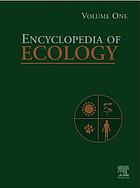Tertiary sources are excellent starting points! They consist of information synthesized from primary and secondary sources. Examples include:
These resources give you succinct overviews of your topic, explain scholarly arguments, point out interesting questions, and refer you to especially key sources.
Start your search for background information with these resources. Gale Virtual Reference Library includes the full text of over 100 subject encyclopedias spanning multiple disciplines, including the Mcgraw-Hill Dictionary of Science & Technology.
Encyclopedia of Puget Sound - From the University of Washington comes this online resource composed of synthesized and integrated scientific information about the Puget Sound and Salish Sea watersheds including biology, chemistry, physical environment, social and economic sciences, ecosystem-based management, climate change and geography.
 Encyclopedia of Ecology
by
S. E. Jorgensen
Encyclopedia of Ecology
by
S. E. Jorgensen